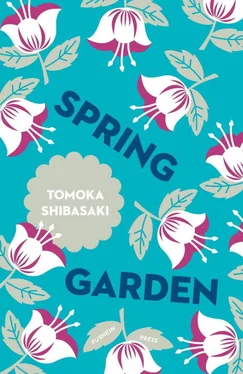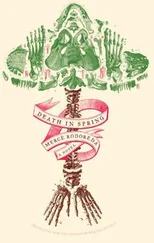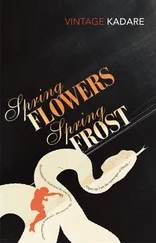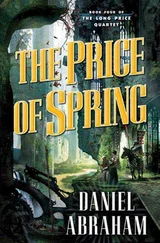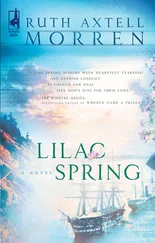Tomoka Shibasaki - Spring Garden
Здесь есть возможность читать онлайн «Tomoka Shibasaki - Spring Garden» весь текст электронной книги совершенно бесплатно (целиком полную версию без сокращений). В некоторых случаях можно слушать аудио, скачать через торрент в формате fb2 и присутствует краткое содержание. Город: London, Год выпуска: 2017, ISBN: 2017, Издательство: Pushkin Press, Жанр: Современная проза, на английском языке. Описание произведения, (предисловие) а так же отзывы посетителей доступны на портале библиотеки ЛибКат.
- Название:Spring Garden
- Автор:
- Издательство:Pushkin Press
- Жанр:
- Год:2017
- Город:London
- ISBN:978-1-78227-273-1
- Рейтинг книги:4 / 5. Голосов: 1
-
Избранное:Добавить в избранное
- Отзывы:
-
Ваша оценка:
- 80
- 1
- 2
- 3
- 4
- 5
Spring Garden: краткое содержание, описание и аннотация
Предлагаем к чтению аннотацию, описание, краткое содержание или предисловие (зависит от того, что написал сам автор книги «Spring Garden»). Если вы не нашли необходимую информацию о книге — напишите в комментариях, мы постараемся отыскать её.
Spring Garden — читать онлайн бесплатно полную книгу (весь текст) целиком
Ниже представлен текст книги, разбитый по страницам. Система сохранения места последней прочитанной страницы, позволяет с удобством читать онлайн бесплатно книгу «Spring Garden», без необходимости каждый раз заново искать на чём Вы остановились. Поставьте закладку, и сможете в любой момент перейти на страницу, на которой закончили чтение.
Интервал:
Закладка:
Then she brought out a bag made of fabric with a beetle pattern, and removed a book from it.
“This book is that house,” she said.
It was a large, thin book with the title Spring Garden. Each page contained four to six photographs, much like a family album. They were mostly black-and-white.
“See? It is, right?”
Nishi opened the book to a page with a photo of the house’s exterior. It was one of just a handful of colour shots. With its sky-blue wooden walls, terracotta roof tiles, and the pointed decoration at the very top, there was no doubting it was that house. The photograph had been taken from the garden, and it was the first time that Taro saw the ground floor of the house on that side. There was a large sunroom, with sliding glass doors to the outside.
“Whoa,” Taro said, peering at the photograph across the table, “the interior is all Japanese style.”
Most of the ground floor was taken up by large tatami rooms, linked by sliding Japanese-style doors. A woman was sitting on one of the large wicker chairs in the sunroom, smiling broadly. She was young, with short hair. The photograph next to it showed a slender, long-haired man in a white shirt, standing in front of a Japanese dresser in one of the ground-floor rooms. The dresser was an impressive multi-compartment affair with embossed black iron fixtures, the kind that you saw in antique shops.
“Yes. It’s got a totally different feel from the outside, hasn’t it? See the design on those wooden panels above the sliding doors? It’s elephants. I’m not sure if they were aiming for an Indian look or what.”
The wooden panels she was speaking of were above the lintel to the doors separating the two tatami rooms. The short-haired woman had grabbed onto that lintel and was swinging from it, laughing. There was a photograph of the dragonfly stained-glass panel that Taro could see from his window, too. Just as Nishi had said before, it was positioned on the landing, midway up the stairs. In the picture, the slender, long-haired man was standing on the landing, peering into an old twin-lens reflex camera.
Both the room leading to the first-floor balcony and the one with the Western-style sash windows had tatami floors. Beneath one of the sash windows was a writing desk. The woman was standing in front of it, holding a cushion as if she were about to throw it at the camera.
“It was built in 1964, the same year as the Tokyo Olympics. It’s totally got that look of the sort of house ‘a person of culture’ around that time would have built, but it seems a bit lacking in taste now, the way they’ve crammed so many different elements in.”
“I know what you mean.”
Of the ten or so colour photos, there was one of the garden as seen from the sunroom: to the left, back by the wall, was the crepe myrtle; to its right, the tree that looked like a wild cherry; and further right, the plum. All of that was just the same as Taro had observed from the road the other day, but in front of the plum in the photograph was a stately pine tree. Beneath it, stones had been arranged to create the effect of a stream, and there was also a small stone lantern. The centre pages featured two large photographs with a very similar composition, showing almost the entirety of the garden. The photo on the right showed the woman standing on the lawn, and in the photo on the left, the slender, long-haired man was standing in exactly the same spot. In both the photos, it was spring. The branches of the plum tree, even sparser then than they were now, were covered in lustrous green leaves, and the tree to its left, still relatively low to the ground, was covered in flowers that looked like cherry blossoms, though in brighter pink. The crepe myrtle was also a bit shorter than it was now. Its leaves had begun to come out, but it wasn’t yet in bud. There were a few small white flowers dotting the ground as well.
On the last page of the book was a single colour photograph, about eight-by-twelve centimetres, surrounded by a thick border of white. It showed the bathroom. The walls and the floor were covered in tiny tiles in varying shades of green. The effect was like a mosaic, perhaps of trees, or waves. There was no one in the photo, neither the woman nor the man, and the bathtub was empty. The light filtering through the small window gently lit up the green space.
“Isn’t the bathroom just great? That’s my favourite photo in the whole book. There’s something about those lime-green tiles.”
Then Nishi began to tell Taro the story of how she’d come to know about the house. While browsing estate sites online in search of a place to live, she’d got hooked on photos of the many grand mansion-style houses in Setagaya. So when she came upon the photo of this house, with its unusual sky-blue exterior, she’d recognized it immediately. Nishi then searched online for the book of photos and, from the various volumes on offer second-hand, selected the one listed as new and clicked buy now, even though it cost a bit more than the others. Three days later, Spring Garden arrived in the post. It had been published two decades earlier, but the book was in almost pristine condition. Apart from a few light scratches on the front cover, there was no damage, and it hadn’t faded at all. It was as though it had been sleeping all those years in some kind of warehouse. In fact, it looked like it could have been published yesterday. And yet, it was a photograph collection documenting the everyday life of a married couple living in that particular house twenty years ago: the husband, a thirty-five-year-old director of TV commercials, and the wife, a twenty-seven-year-old actress in a small theatre company.
It was clear that the house had undergone change since the book was published, but it didn’t matter. Nishi saved each of the images of the sky-blue house from the site onto her smartphone, so that she could look at the snaps of the structure and its floor plan whenever she felt like it: The ground floor was the front entrance with its stained glass, the forty-square-metre living room, the sunroom, the kitchen fitted out in plain wood, and the bathroom, while the first floor had the two Western-style rooms of ten square metres, a slightly larger tatami room of thirteen square metres and the balcony. Then, of course, there was the garden with the crepe myrtle, the plum and the Hall crabapple.
As enamoured of the house as she was, Nishi wasn’t able to move into it. A three-bedroom house of that size was too big for a single person, and the rent was a staggering 300,000 yen per month. But there was a flat for rent directly behind it that otherwise fulfilled her requirements exactly, and it was good to have something close by like that to bring a bit of excitement to your day-to-day. In fact, Nishi said, she had believed since childhood that she had luck on her side.
If she loved the house so much, though, Taro asked, had she not even requested that the estate agent show it to her? And had she not considered the possibility of living there with someone else and sharing the rent? Nishi said that was out of the question: she found it impossible to relax when there was something moving in her space. She also explained that her conscience, which was unbending in certain areas, wouldn’t allow her to bother an estate agent when she had no intention of renting the house. What was more, she certainly didn’t look like the sort of person who could afford it. One time in the past, when she’d gone to look at a place that was just slightly above her price range, the landlady told her that it was clearly not the sort of place for a person like her, Nishi told Taro, then cackled.
So that was how Nishi had come to live on the first floor of View Palace Saeki III, a thirty-one-year-old building, fifteen minutes’ walk to the train station. The lease was for two years, and when told about the owner’s plans to demolish the building, she replied that she didn’t mind. She moved in at the start of February.
Читать дальшеИнтервал:
Закладка:
Похожие книги на «Spring Garden»
Представляем Вашему вниманию похожие книги на «Spring Garden» списком для выбора. Мы отобрали схожую по названию и смыслу литературу в надежде предоставить читателям больше вариантов отыскать новые, интересные, ещё непрочитанные произведения.
Обсуждение, отзывы о книге «Spring Garden» и просто собственные мнения читателей. Оставьте ваши комментарии, напишите, что Вы думаете о произведении, его смысле или главных героях. Укажите что конкретно понравилось, а что нет, и почему Вы так считаете.
